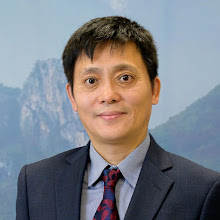Hashimoto’s disease is a thyroiditis caused by an autoimmune reaction. This disease was first described by a Japanese doctor called Hashimoto when he was practising in Germany in 1912. The average incidence of this disease is 1-1.5 in 1000. The incidence of women is 15-20 times more than in men. It occurs more frequently in the age group of 30 to 50, but may also be seen at other times.
In some cases, no symptoms may be seen at early stage, but in most cases, symptoms are similar to those of hypothyroidism. Common symptoms include: fatigue, unexpected weight gain, aversion to cold, muscle aches, cramps, tenderness or stiffness, joint pain or swelling, pale skin and puffy face, hoarse voice, constipation, depression, visibly enlarged thyroid.
It is not very clear what triggers this autoimmune disorder. Factors such as iodine, medications, infection, smoking and possibly stress may be involved. If you want to prevent Hashimoto’s disease or stop it developing, you should try to avoid these possible causes.
In Western medicine, this is usually being treated with levothyroxine. This hormone replacement therapy can only partially recover thyroid functions but not regulate the immune system in general. It cannot reduce the level of antithyroid antibody. Patients need to take medicine all their life. For some cases with a large goitre, they may even need surgical operation. After operation they still need to take thyroxine.
In Chinese medicine, it is believed that this disease is due to Qi stagnation, blood stasis and phlegm accumulation in the neck. It falls within the category of Ying Liu (瘿瘤) in the classic text of Chinese medicine. In China, we usually treat this disease with integrated traditional Chinese medicine and western medicine. I believe that the operation and iodine radioactive therapy will accelerate the process of hypothyroidism. Instead, we can use Chinese herbs to remove the liver qi stagnation and blood stasis. We can expel phlegm and soften the goitre by Chinese herbs. I usually use Chaihu (Bupleuri Radix), Chenpi (Pericarpium Citri Reticulatae), Xiangfu (Cyperus rotundus) for qi stagnation; Chishao (Radix Platycodi), Danshen (Savia miltiorrhiza) and Danggui (Angelica sinensis) for blood stasis; Banxia (pinellia tuberifera tenore), Houpo (Magnolia officinalis Rehd.), Zhebeimu (Fritillaria thunbergii Miq) and Dannanxing (Arisaema Cum Bile) for phlegm accumulation. In the past two decades, there were some different opinions about applying herbs which contain iodine such as Haizao (Sargassum), Kunbu (ThallusLaminariae) and Huangyaozi (Rhizoma Dioscoreae Bulbiferae). Some people believed that this kind of herbs will cause Wolff–Chaikoff effect which is harmful to the thyroid. Some people believed that herbs with iodine content are different from iodine preparation. I think it is still safe to use these herbs for some thyroid diseases with small doses administered for a short time, especially for cases with low iodine. I believe that Chinese herbs have many advantages in treating Hashimoto’s disease and it is good for improving symptoms and reducing side effects of western medicine.
This disease needs proper treatment once it is diagnosed. There are reports of patients with Hashimoto's thyroiditis being three times more likely to have thyroid cancer. (Larson SD. 2007).
To conclude, integrated traditional Chinese medicine and western medicine is always better than any single therapy.
Reference:
Larson SD, Jackson LN, Riall TS, et al (2007) Increased incidence of well-differentiated thyroid cancer associated with Hashimoto thyroiditis and the role of the PI3k/Akt pathway. J Am Coll Surg. 204 (5):764-73.
Larson SD, Jackson LN, Riall TS, et al (2007) Increased incidence of well-differentiated thyroid cancer associated with Hashimoto thyroiditis and the role of the PI3k/Akt pathway. J Am Coll Surg. 204 (5):764-73.

